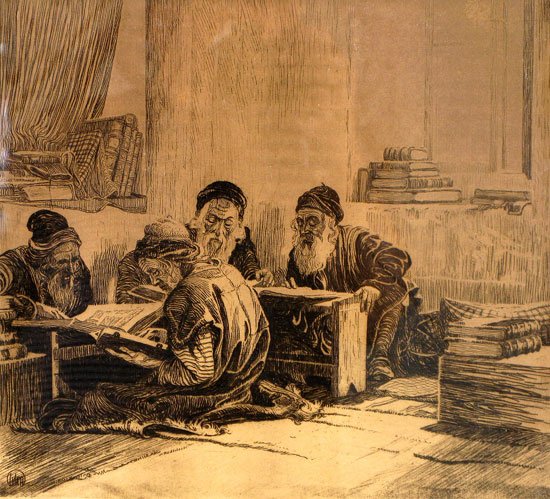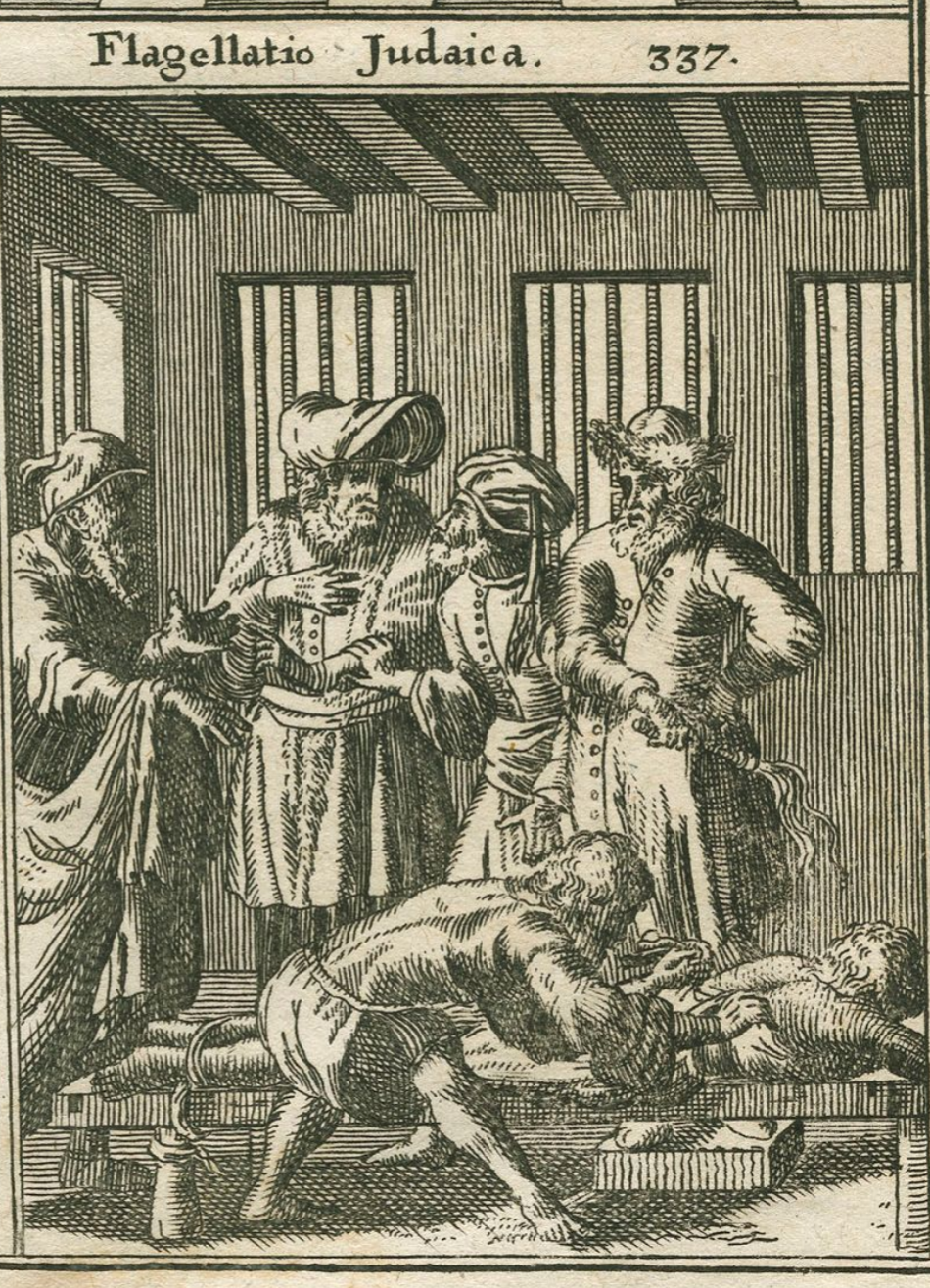|
Kapparah
Atonement in Judaism is the process of causing a transgression to be forgiven or pardoned. In Rabbinic Judaism In Rabbinic Judaism, atonement is achieved through repentance, which can be followed by some combination of the following: * confession * restitution * the occurrence of Yom Kippur (the day itself, as distinct from the Temple service performed on it) * tribulations (unpleasant life experiences) * the experience of dying. * the carrying out of a sentence of lashes or execution imposed by an ordained court (not now in existence) * Temple service (not now in existence, e.g. bringing a sacrifice). Which of these additions are required varies according to the severity of the sin, whether it was done willfully, in error, or under duress, whether it was against God alone or also against a fellow person, and whether the Temple service and ordained law courts are in existence or not. Repentance is needed in all cases of willful sin, and restitution is always required in ... [...More Info...] [...Related Items...] OR: [Wikipedia] [Google] [Baidu] |
Rabbinic Judaism
Rabbinic Judaism ( he, יהדות רבנית, Yahadut Rabanit), also called Rabbinism, Rabbinicism, or Judaism espoused by the Rabbanites, has been the mainstream form of Judaism since the 6th century CE, after the codification of the Babylonian Talmud. Rabbinic Judaism has its roots in Pharisaic Judaism and is based on the belief that Moses at Mount Sinai received both the Written Torah (''Torah she-be-Khetav'') and the Oral Torah (''Torah she-be-al Peh'') from God. The Oral Torah, transmitted orally, explains the Written Torah. At first, it was forbidden to write down the Oral Torah because the rabbis feared that it would become rigid and lose its flexibility, but after the destruction of the Second Temple they decided to write it down in the Talmud and other rabbinic texts. Rabbinic Judaism contrasts with the Sadducees, Karaite Judaism and Samaritanism, which do not recognize the Oral Torah as a divine authority nor the rabbinic procedures used to interpret Jewish scripture. ... [...More Info...] [...Related Items...] OR: [Wikipedia] [Google] [Baidu] |
Repentance In Judaism
Repentance ( he, תשובה, literally, "return", pronounced ''tshuva'' or ''teshuva'') is one element of atoning for sin in Judaism. Judaism recognizes that everybody sins on occasion, but that people can stop or minimize those occasions in the future by repenting for past transgressions. Thus, the primary purpose of repentance in Judaism is ethical self transformation.Telushkin, Joseph. ''A Code of Jewish Ethics: Volume 1 - You Shall Be Holy''. New York: Bell Tower, 2006. p. 152-173. A Jewish penitent is traditionally known as a ''baal teshuva''. A ''baal teshuva'' is even more revered in the Jewish tradition than a tzadik, righteous person. Repentance and creation According to the Talmud, God created repentance before He created the physical universe, making it among the first things created. ('' Nedarim'' 39b). Scherman, Nosson. "An Overview - Day of Atonement and Purity." An Overview. ''The Complete ArtScroll Machzor: Yom Kippur''. By Scherman. Trans. Scherman. Brooklyn, ... [...More Info...] [...Related Items...] OR: [Wikipedia] [Google] [Baidu] |
Confession In Judaism
In Judaism, confession ( he, וִדּוּי, vīddūy) is a step in the process of atonement during which a Jew admits to committing a sin before God. In sins between a Jew and God, the confession must be done without others present (The Talmud calls confession in front of another a show of disrespect). On the other hand, confession pertaining to sins done to another person are permitted to be done publicly, and in fact Maimonides calls such confession "immensely praiseworthy". The confession of a sin in itself does not bring immediate forgiveness, but rather it marks a point in time after which a person's demonstration of the recognition and avoidance of similar future transgressions show whether they have truly recovered from the sin and therefore whether they deserve forgiveness for it. The Hebrew Bible ''Vidui'' is not found as a noun in the Hebrew Bible, but the concept of confession and the hithpael verb form of ''yadah'' (ידה) – from which ''vidui'' is derived – ar ... [...More Info...] [...Related Items...] OR: [Wikipedia] [Google] [Baidu] |
Yom Kippur
Yom Kippur (; he, יוֹם כִּפּוּר, , , ) is the holiest day in Judaism and Samaritanism. It occurs annually on the 10th of Tishrei, the first month of the Hebrew calendar. Primarily centered on atonement and repentance, the day's observances consist of full fasting and ascetic behavior accompanied by intensive prayer as well as sin confessions (traditionally inside of a synagogue). Alongside the related holiday of Rosh HaShanah, Yom Kippur is one of the two components of the "High Holy Days" of Judaism. Etymology () means "day" in Hebrew and () is translated to "atonement". The common English translation of Yom Kippur is Day of Atonement; however, this translation lacks precision. The name Yom Kippur is based on the Torah verse, "...but on the 10th day of the seventh month it is the day of ''kippurim'' unto you..." The literal translation of ''kippurim'' is cleansing. Yom Kippur is a Jewish day to atone for misdeeds and become cleansed and purified from the ... [...More Info...] [...Related Items...] OR: [Wikipedia] [Google] [Baidu] |
Atonement In Judaism
Atonement in Judaism is the process of causing a transgression to be forgiven or pardoned. In Rabbinic Judaism In Rabbinic Judaism, atonement is achieved through repentance, which can be followed by some combination of the following: * confession * restitution * the occurrence of Yom Kippur (the day itself, as distinct from the Temple service performed on it) * tribulations (unpleasant life experiences) * the experience of dying. * the carrying out of a sentence of lashes or execution imposed by an ordained court (not now in existence) * Temple service (not now in existence, e.g. bringing a sacrifice). Which of these additions are required varies according to the severity of the sin, whether it was done willfully, in error, or under duress, whether it was against God alone or also against a fellow person, and whether the Temple service and ordained law courts are in existence or not. Repentance is needed in all cases of willful sin, and restitution is always required in th ... [...More Info...] [...Related Items...] OR: [Wikipedia] [Google] [Baidu] |
Maimonides
Musa ibn Maimon (1138–1204), commonly known as Maimonides (); la, Moses Maimonides and also referred to by the acronym Rambam ( he, רמב״ם), was a Sephardic Jewish philosopher who became one of the most prolific and influential Torah scholars of the Middle Ages. In his time, he was also a preeminent astronomer and physician, serving as the personal physician of Saladin. Born in Córdoba, Almoravid Empire (present-day Spain), on Passover eve, 1138 (or 1135), he worked as a rabbi, physician and philosopher in Morocco and Egypt. He died in Egypt on 12 December 1204, when his body was taken to the lower Galilee and buried in Tiberias. During his lifetime, most Jews greeted Maimonides' writings on Jewish law and ethics with acclaim and gratitude, even as far away as Iraq and Yemen. Yet, while Maimonides rose to become the revered head of the Jewish community in Egypt, his writings also had vociferous critics, particularly in Spain. Nonetheless, he was posthumously ackno ... [...More Info...] [...Related Items...] OR: [Wikipedia] [Google] [Baidu] |
Mishneh Torah
The ''Mishneh Torah'' ( he, מִשְׁנֵה תּוֹרָה, , repetition of the Torah), also known as ''Sefer Yad ha-Hazaka'' ( he, ספר יד החזקה, , book of the strong hand, label=none), is a code of Rabbinic Jewish religious law (''halakha'') authored by Maimonides (Rabbi Moshe ben Maimon/Rambam). The ''Mishneh Torah'' was compiled between 1170 and 1180 CE (4930 and 4940 AM), while Maimonides was living in Egypt, and is regarded as Maimonides' ''magnum opus''. Accordingly, later sources simply refer to the work as "''Maimon''", "''Maimonides''", or "''RaMBaM''", although Maimonides composed other works. ''Mishneh Torah'' consists of fourteen books, subdivided into sections, chapters, and paragraphs. It is the only Medieval-era work that details all of Jewish observance, including those laws that are only applicable when the Temple in Jerusalem is in existence, and remains an important work in Judaism. Its title is an appellation originally used for the Biblical boo ... [...More Info...] [...Related Items...] OR: [Wikipedia] [Google] [Baidu] |
Sin Offering
A sin offering ( he, קָרְבַּן חַטָּאת, ''korban ḥatat'', , lit: "purification offering") is a sacrificial offering described and commanded in the Torah (Lev. 4.1-35); it could be fine flour or a proper animal.Leviticus 5:11 A sin offering also occurs in 2 Chronicles 29:21 where seven bulls, seven rams, seven lambs and seven he-goats were sacrificed on the command of King Hezekiah for the kingdom, for the sanctuary, and for Judah. Like all types of sacrifices offered on the altar, the flour had to be unscented and the animal had to be completely unblemished. This offered sacrifice accompanied the important required core means of atonement for the committing of an ''unintentional'' transgression of a prohibition, that either has brought guilt upon the 'community of Israel' or the individual.''Jewish Encyclopedia'' This offering is brought during or after atonement for those transgressions that had been committed inadvertently, or in ignorance: intentional transgress ... [...More Info...] [...Related Items...] OR: [Wikipedia] [Google] [Baidu] |
Mishnah
The Mishnah or the Mishna (; he, מִשְׁנָה, "study by repetition", from the verb ''shanah'' , or "to study and review", also "secondary") is the first major written collection of the Jewish oral traditions which is known as the Oral Torah. It is also the first major work of rabbinic literature. The Mishnah was redacted by Judah ha-Nasi probably in Beit Shearim or Sepphoris at the beginning of the 3rd century CE in a time when, according to the Talmud, the persecution of the Jews and the passage of time raised the possibility that the details of the oral traditions of the Pharisees from the Second Temple period (516 BCE – 70 CE) would be forgotten. Most of the Mishnah is written in Mishnaic Hebrew, but some parts are in Aramaic. The Mishnah consists of six orders (', singular ' ), each containing 7–12 tractates (', singular ' ; lit. "web"), 63 in total, and further subdivided into chapters and paragraphs. The word ''Mishnah'' can also indicate a single paragraph of ... [...More Info...] [...Related Items...] OR: [Wikipedia] [Google] [Baidu] |
Makkot
Makot (in Hebrew: מכות) (in English: "Lashes") is a tractate of the Mishnah and Talmud. It is the fifth volume of the order of Nezikin. Makkot deals primarily with laws of the Jewish courts (beis din) and the punishments which they may administer, and may be regarded as a continuation of tractate Sanhedrin, of which it originally formed part. In its scope of application are the topics of: *The false witnesses (''Edim Zomemim'') *The exile in a city of refuge. (''Aray Miklat'') *The lashes administered by the court. (''Makkot'') The third chapter of tractate Makkot enumerates 59 offenses, each entailing lashes. Of these, three are marital sins of priests; four, prohibited inter-marriages; seven, sexual relations of an incestuous nature; eight, violations of dietary laws; twelve, various violations of the negative precepts; twenty-five, abuses of Levitical laws and vows. When the offense has been persisted in, the punishment depends on the number of forewarnings (see Hatra'ah) ... [...More Info...] [...Related Items...] OR: [Wikipedia] [Google] [Baidu] |
Kareth
The Hebrew term ''kareth'' ("cutting off" he, כָּרֵת, ), or extirpation, is a form of punishment for sin, mentioned in the Hebrew Bible and later Jewish writings. Kareth in its simplistic meaning refers to an individual being expelled from the Nation of Israel. In the Talmud, ''kareth'' means not necessarily physical "cutting off" of life, but can also mean the extinction of the soul and denial of a share in the world to come. Etymology The word ''kareth'' is derived from the Hebrew verb ''karat'' ("to cut off"). The noun form ''kareth'' does not occur in the Hebrew Bible; rather, verb forms such as ''venichreta'' (" hat soulshall be cut off") are most common. Hebrew Bible In the Hebrew Bible, verbs that underlie the later use of the noun form ''kareth'' refer to forms of punishment including premature death, or else exclusion from the people. According to Richard C. Steiner, the phrase "to be cut off from one's people" is an antonym for "to be gathered to one's people ... [...More Info...] [...Related Items...] OR: [Wikipedia] [Google] [Baidu] |
Hanina Bar Gamaliel
Rav Hanina (or Hananiah, sometimes spelled: Hananyah; he, רב חנינא or ) was second and third generation Amora Sage of the Land of Israel. Biography He was a student of Rabbi Yannai and R. Yochanan bar Nafcha. He was the scion of a family of great sages, and the brother of R. Hoshaiah Rabbah. Hoshaiah is once referred to as "Rabbi Hoshaiah bar Rabbi Hama", which suggests that Hanina is the same as Hanina bar Hama, though other opinions suggest they were different individuals. Hanina was a bachelor all his life, and together with his brother Hoshaiah sold shoes for prostitutes, and yet they did not raise their eyes to see them. Rava stated that it was with respect to these two brothers that it is said that if a bachelor lives in a city and does not sin, God proclaims his praise every day. Several stories indicate that he had extensive medical knowledge. R. Yochanan bar Nafcha wanted to ordain him a Rabbi but failed, until R. Hanina explained to him that he is a desc ... [...More Info...] [...Related Items...] OR: [Wikipedia] [Google] [Baidu] |





